Introduction
The objective of this portfolio is to examine the competitive position of a business organization in the market for particular goods or services with the combination of three specific tasks. Apple Inc. is chosen as a business organization to analyze its competitive position with the product of Mac in the UK market. Steven Jobs and Steven Wozniak were visualized personal computers as Apple Computer in 1976 with the invention of Apple-1. In 1977, Apple was incorporated from venture capitalists and from starting the organization always focused on creating something new as a responsibility to hold its reputation in the market. Apple’s mission aimed to bring mass changes in computers and their systems. It has proven itself as a successful organization with US$ 1 billion in sales in 1983 with six years of its business. In the early stages, Apple had two product lines, Apple II and Macintosh. The Mac line was introduced to the market as development of Apple’s compatibility and its products were incompatible with IBM machines, that’s why, Mac computers were discovered to move technologically in the market to start over in competitive environment (Freedman & Vohr, 1998). This paper has analyzed the competitive UK market of Apple Inc. with three different tasks discussed as follows:
Task A
In the first task of the portfolio, there are some important requirements should be fulfilled, which are discussing with a different point of issues in below:
Calculation of Concentration Measures for Apple Inc
A concentration ratio is a standard tool of competition economists and authorities to market concentration, which is measured with traditional structural measures based on market shares with the interests in a competitive environment. In this portfolio, 5-firm and 10-firm concentration ratios are required and after the Herfindahl-Hirschman Index (HHI) has to be measured according to the UK market shares of Apple and other competitors.
UK Market Share
To calculate the concentration ratio, foremost, it is important to know about the market share of Apple and other related competitors in UK market works. Apple’s share of the UK market is at 5% in 2009, which is the fifth position among competitors (Yahoo Finance 2010), and (Mindinversion, 2010). The following table shows the market share of major 10 competitors of Apple in the UK:
Table: Market share of Competitors’ of Apple in the UK
5- Firm Concentration Ratio
The 5 firm concentration ratio is measured by adding market shares of the 5 largest firms in a specific industry (Financial Education, 2010). From the above table, it is shown that the major five largest organizations in UK markets are Acer, Dell, HP, Toshiba, and Apple itself. Therefore, 5- firm concentration ratios for four years are:
10- Firm Concentration Ratio
As 5- firm concentration ratio, the 10-firm concentration ratio is measured by adding the 10 largest firms in the K market, which are given in below:
The 10- firm concentration ratio is the intuitive measurement, which is providing the market share of large competitors to be oligopolistic in the competitive market.
Herfindahl-Hirschman Index (HHI)
The 5- firm and 10- firm concentration ratios is not providing a greater degree of discrimination than HHI, which provides more reliable results than these ratios. This index is indicating that, many competitors results low concentration and few competitors have high level of concentration. As there are mainly five major competitors of Apple, so HHI is measured by the sum of squared market share of each organization in the industry. So, HHI is calculating below:
HHI is above 0.18, which is indicating a high concentration in the UK market. If it is compared with concentration ratio, HHI is offered greater discrimination according to firms and its weight in software and hardware industry in UK market. Therefore, it is not measuring intuitive measures.
Identification of ‘Market Structure’

As Apple have more than 10 largest firms as its competitors in hardware and software industry in UK’s competitive market, so the market structure of Apple is identified as “Oligopoly”. Oligopoly market structure is identified when there are few largest firms are capturing more than 40% market share in that industry. From the table of UK market share, it is seen that Acer, Dell, HP, Toshiba, and Apple are capturing UK market share more than 70% from 2000 to the present time (Mintel, 2007). Therefore, it is a perfectly Oligopoly market structure in the UK. There are some other indicators to measure the market structure of Apple, which are shown with the help of the graph:
Discussion of changes to market concentration over the specified period
The market concentration according to 5 and 10 firm, it can said that there is mainly six major organizations in the UK as hardware and software industry, which are Acer, Dell, HP, Toshiba, Apple and Microsoft Corporation. These firms are capturing most of the market share from 2000, which is more than 70%. The concentration has been changed during these periods, but not identically. As these organizations are capturing most of the market share in the UK, that’s why the results of 10- firm concentration and 5- firm concentration do not vary a lot.
From HHI, it is also measurable that, the total of HHI is result as 0.50396, which is indicated that, there are high levels of competition in UK market in software and hardware industry. For this reason, Apple can be structured itself as an Oligopoly according to the UK market.
Task B
In the second task of the portfolio, it is important to review the competitive behavior of Apple in the UK market. The competitive behavior should be compared with other major competitors, which are already mentioned in the previous tasks. After comparison, the market structure should be positioned from predicted results according to appropriate theories or laws in a specific period of time and its effect on concentration in the market.
Identification of the competitive methods employed
In the case of competition, Apple is using different types of strategies from the beginning. However, it is continuously changing its strategies based on situational changes and customer demand. Thus, the competitive approach Apple upholds is a customer-oriented competition. In this sense, the product design of Mac attracts all the target customers. Apple has employed some competitive methods according to market demand, which is discussing briefly below:
- Innovation of MP3 Players: Calacanis (2010) argued that Apple is designing different software for MP3 Players, which is named iTunes. It is different, because, it does not support other players to play. It is designed for its own brand only.
- Practices in Telecommunications: From 1980’s, Apple is playing a monopoly market by iPhone, for users of telecommunications (Boykin, Fiorini, Tanaka, & Webb, 2008). It is different from AT&T according to technological differences.
- Apple Store Policies: Slivka (2010) stated that Apple has platform for massive applications for hardware and software products, over consumers are using the application of Apple.
- Banning other browsers: Apple has launched “Safari” as browsers, and after launching this, Apple is banning other sophisticated browsers, like Opera.
- Blocking Google Voice-Application: Apple is successfully blocking Google Voice, as the browser is banning. It is also denying not using Firefox or Google Chrome on anyone’s personal computer.
These competitive behaviors are working as somehow anti- competitive behavior in the industry. In every oligopoly industry, competitors are dependable on each other but Apple is actively blocking Google Voice Applications and Opera Internet Browser, which are very sophisticated and highly favorable to customers. For inability to use these, customers may leave Apple, which is causing its main failure in the industry. According to Apple Store Policy, it is stick with language in applications of hardware and software, which is blocking the international markets for using it. Apple is facing too many troubles for competitive behaviors, which can be major advantages for Microsoft, Google and other major competitors in the UK market. Therefore, it should deeply examine the competitive behavior according to customer demand and the nature of competition in the UK market.
Contrast with other organizations behavior
In the marketplace, the competition of software or hardware is based on innovation and technology. Mac as a product in this market niche has differentiated behavior comparing with the products of other organizations. An organization like Microsoft has aggressive behavior towards capturing the market share and profit. Thus, Microsoft itself is accused of anticompetitive behavior, which will give some competitive advantages in the marketplace. The anticompetitive behavior of Microsoft is expressed by the distribution of Internet Explorer as an integrated part of the Windows system. The term anticompetitive stresses that Microsoft leaves no space for the competitors to compete as its products can reach easily to the competitors easily (Anon, 2010).
According to the competition law, price discrimination is one of the major discrepancies, which will affect the competitive environment of the marketplace. Price discrimination means the irrelevance between the cost and the price of the product where the price of the product is too much more than the cost. Again, there can be behavior where the firm is discounting or giving rebates to the customers where the new entrants or other firms fail to avail themselves with these low costs. Besides, According to this law, abuse of dominant position is also an illegal act (Phillips, 2010).
Abuse of the dominant position illustrates that the firm which has dominance over the market trying to abuse its dominance by building barriers for the new entrants or the existing competitors.
In the market of software and Hardware, both of these two types of illegal movements can be seen. In the case of Mac products, it can be accused of price discrimination. No doubt that these products are differentiated based on the quality and better quality means more money, but the tradeoffs between cost and price is not present in case of Mac products. The second complaint is accurate for the products of Microsoft. No doubt, Microsoft is the market leader of these types of products worldwide. It is obvious that Microsoft will try to maintain this dominance over the marketplace. However, it must follow the law. Microsoft is abusing its market dominance situation by lowering the product prices or by integrating different products in one single product (Entrepreneurs Media, 2010).
For other competitors like HP and IBM, the competitive behavior is almost the same. All these companies are trying to capture a good market share in such a market where the demand is more than the supply. Consumers need more technological advancement and wish to have the best technologies possible at the least possible cost. So, all of these companies must target customer satisfaction as their organizational behavior.
Comparison of predicted and observed competitive behavior
The predicted behavior was that the firm would obey the Law related to the competition but most of the firm is not considering the regulations as their completion in the marketplace is becoming more complicated day by day. Companies must keep some place for the new entrants or the existing competitors and must not render any unfair means but these firms are brutally expanding their business and designing their products to attract the target customers and capture a good market share. For this, they also are copying the product types or designs of the competitors disobeying the copyright act.
Task C
Illustration of the relevance of performance measure chosen
Total quality management of a firm is largely dependent on the measurement of the performance as a building block of a successful organization. It is important to represent the qualitative success in quantitative figures so that they can be easily compared with the competitors. Without measuring, it is difficult to manage as well. Performance measurement is a key issue in business because through this any business can identify and track their actual improvement against the goals of the firm. Besides, improvement opportunities can be identified very easily along with comparing with the external and internal standards. When a firm wants to work strategically, its action cycle “Plan-Do-Check-Act” mostly becomes dependant on the performance measurement. There are many performance measurement approaches. For this report, three approaches are selected. These are:
- Cost of quality measurement approach
- A simple performance measurement framework
- The balanced scorecard approach
Cost of quality measurement approach
In a market where Mac of Apple is belonging to, it largely depended upon how the firm can provide the maximum quality products within the minimum cost. Consumers of this market are highly “quality sensitive” and thus quality assurance is important. In this approach, a firm can assess:
- The effectiveness of the quality management,
- Can be able to determine the problem areas, opportunities, savings, and action priorities,
- Can be used as an important communication tool
The relevance of selecting this approach according to the software market is:
- Consumers in this market want to know the numeric presentation of quality
- Consumers need or prefer the best possible communication from the firm
- Consumers want to assess how cost-effective their buying decision is
Three costs are assessed in this approach to get the actual cost picture. These are:
- Prevention cost: Costs associated with the design, execution and maintenance of the system are termed be said saysay preventionprevention costs. It includes product/service requirements, quality planning, quality assurance, and training.
- Appraisal costs: Costs, which will assess the supplier and customer’s evaluation, process of purchased resources, procedure, product/services that will lead to an assurance of conformance specification. It includes verification, quality audits, and vendor rating.
- Failure costs: Failure of any operation external or internal has some costs. These costs will be included in this section. Internal failure costs may include waste, scrap, rework, or rectification, analysis and external failure costs include- repairs and servicing, warranty claims, complaints and returns.
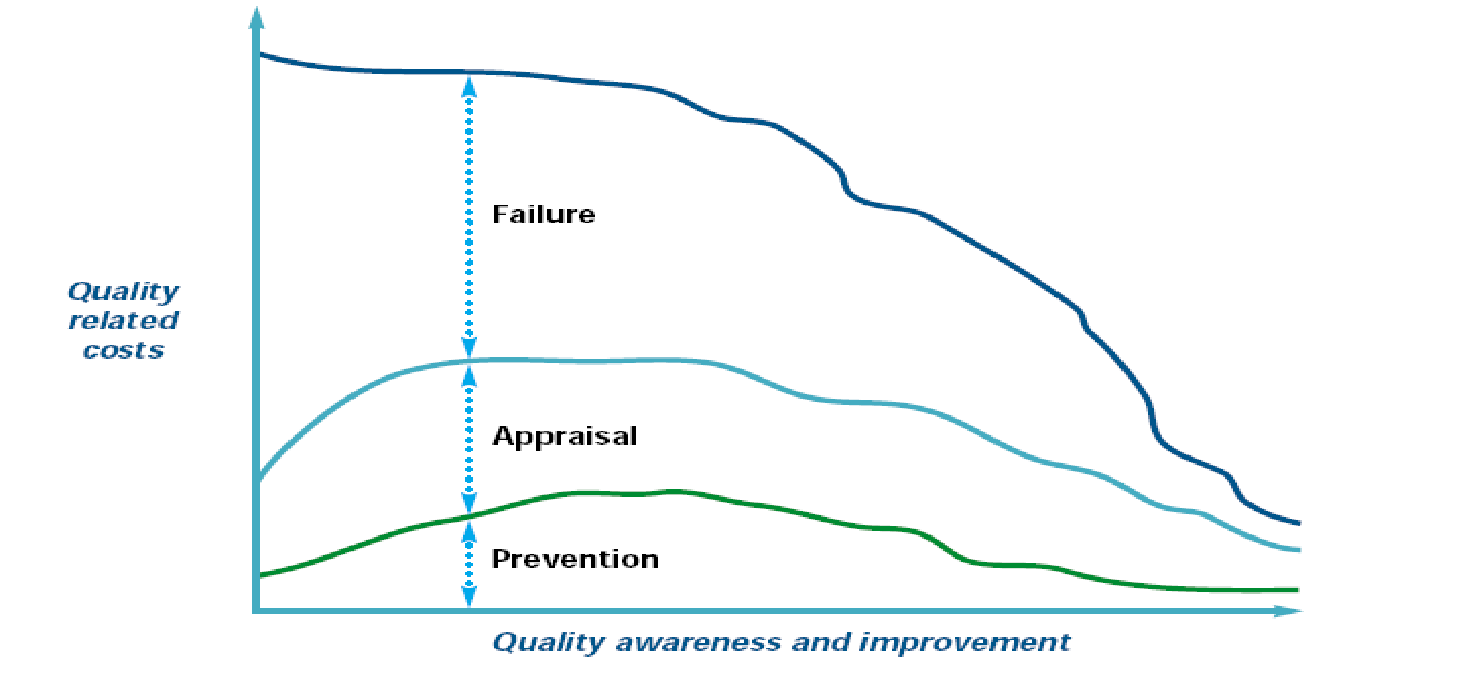

A simple performance measurement framework
This is an approach where the major focus is the customer and the success factors of the performance measure are highly influenced by customer satisfaction. It emphasizes heavily on the meaningful, unambiguous and broad realization; a team-based approach where the tasks are basically owned and managed by the teams; requires a higher level of data integrity, ability to trigger the improvement aligned with the key goals and drivers of the firm. It is relevant with the software market because:
- Consumers in this market want to ensure efficiency, effectiveness, and productivity.
- Consumers need to assess whether the goals of the firm are achievable or not.
- This approach can provide the results timely which is appreciated highly by the consumers.
- Consumers critically think of quality rather than price.
- Consumers think of the software quality as a SMART one, which is measurable through this approach. Here SMART stands for Specific, Measurable, Achievable, Relevant and timely.
Steps in this approach are:

The balanced scorecard approach
This approach was invented by Kaplan and Norton. According to this approach, emphasize is lessen of the financial measurement rather than consider the other functions as well. Besides the financial figures, in the case of the software industry, another three areas are treated similarly here. These are Customer perspective, internal business perspective, innovation, and learning perspective.
To assess the performance of the firm the balance between these four areas is most essential. In this approach, there are two columns for every area, where the actual and the planned data are written. Against this, there is another column called Measure. Altogether, this is termed a Scorecard. The balance between all these four areas indicates a sound working condition of the firm.
It is relevant to the Market of Apple in the sense that:
- Consumers high concern for quality
- Consumers’ need to be the focus of marketing and production strategy
- Consumers’ preferences change rapidly and as this approach also measures innovation and learning it is possible to measure the customer’s attitude accurately
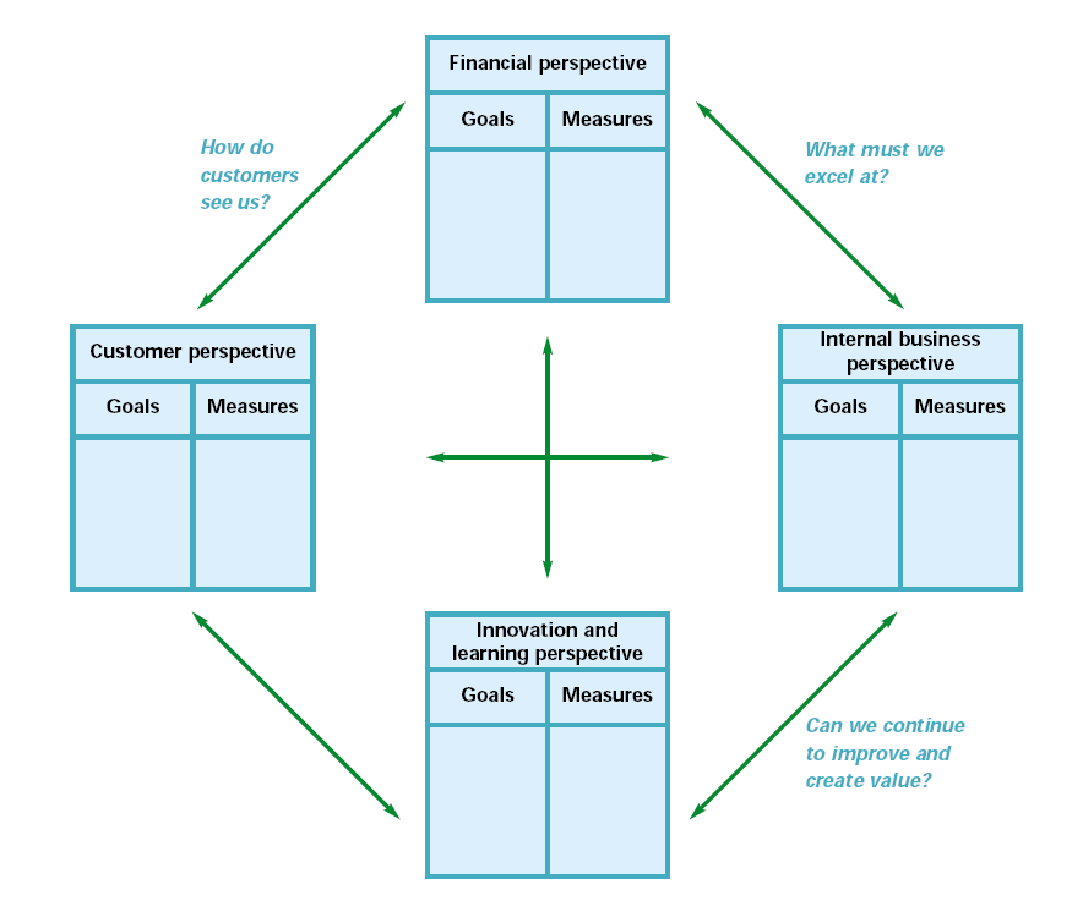
Comparison of performance levels
Here to compare the performance of Apple, Microsoft Corporation is taken as the competitor of the firm.
Cost of quality measurement approach:
Apple: In case of cost or expense to ensure quality should be considered. If we consider the last year of operation in the four quarter, Mac of Apple has shown a consistent growth in revenue, which represents the firm consistency of cost of quality measurement approach. As revenue is the Difference between earnings and cost, this is indicating the good performance of the product. In the first quarter of 2009, there was revenue of 2511 million dollars from Mac laptops, which was decreased by 1895 million dollars in the second quarter. However, after that, the Mac products started to generate high revenue of 2200 million dollars in the 3rd quarter and 2866 in the fourth. From this information, it can be said Mac’s performance is running towards a good position.
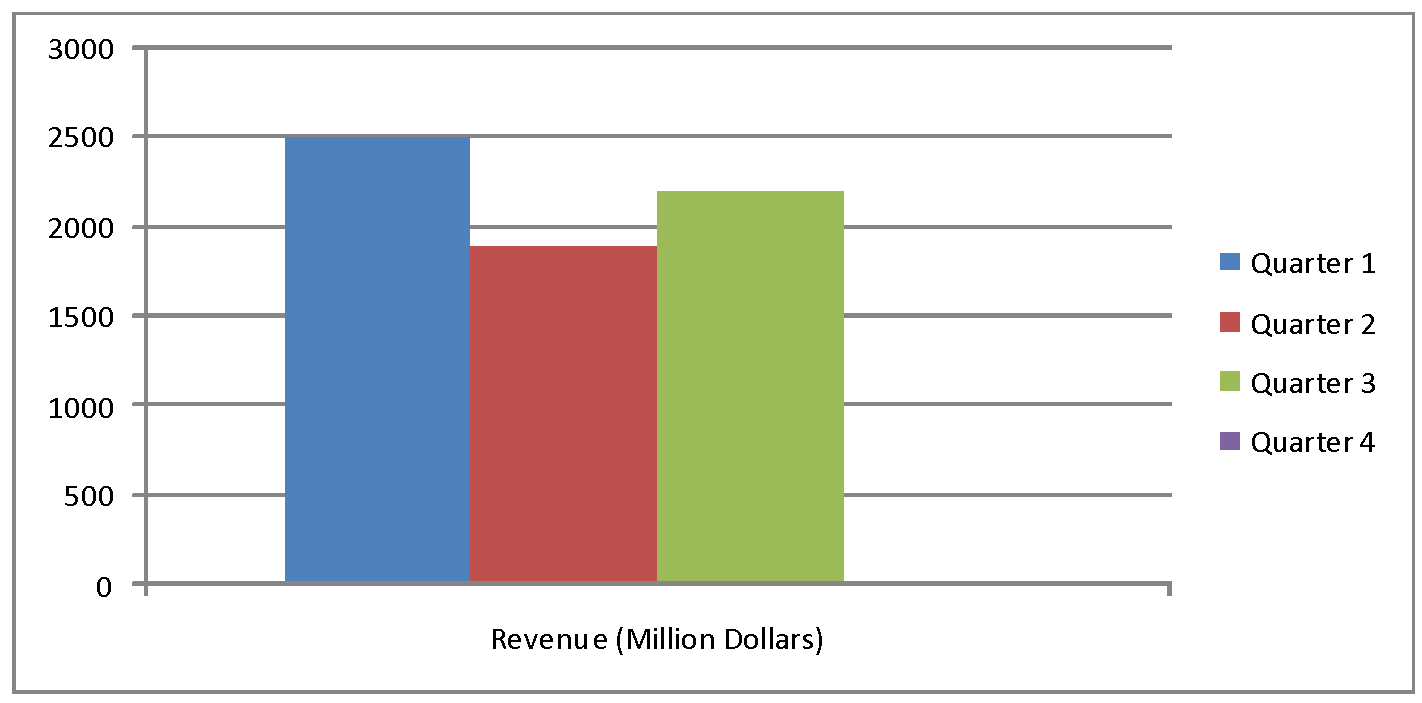
Microsoft: Comparing to the Apple Mac, Microsoft as a company has experienced a decrease in the fiscal year 2009. In 2008, the revenue was 60,420 million dollars where in 2009 it was 58,436 million dollars.
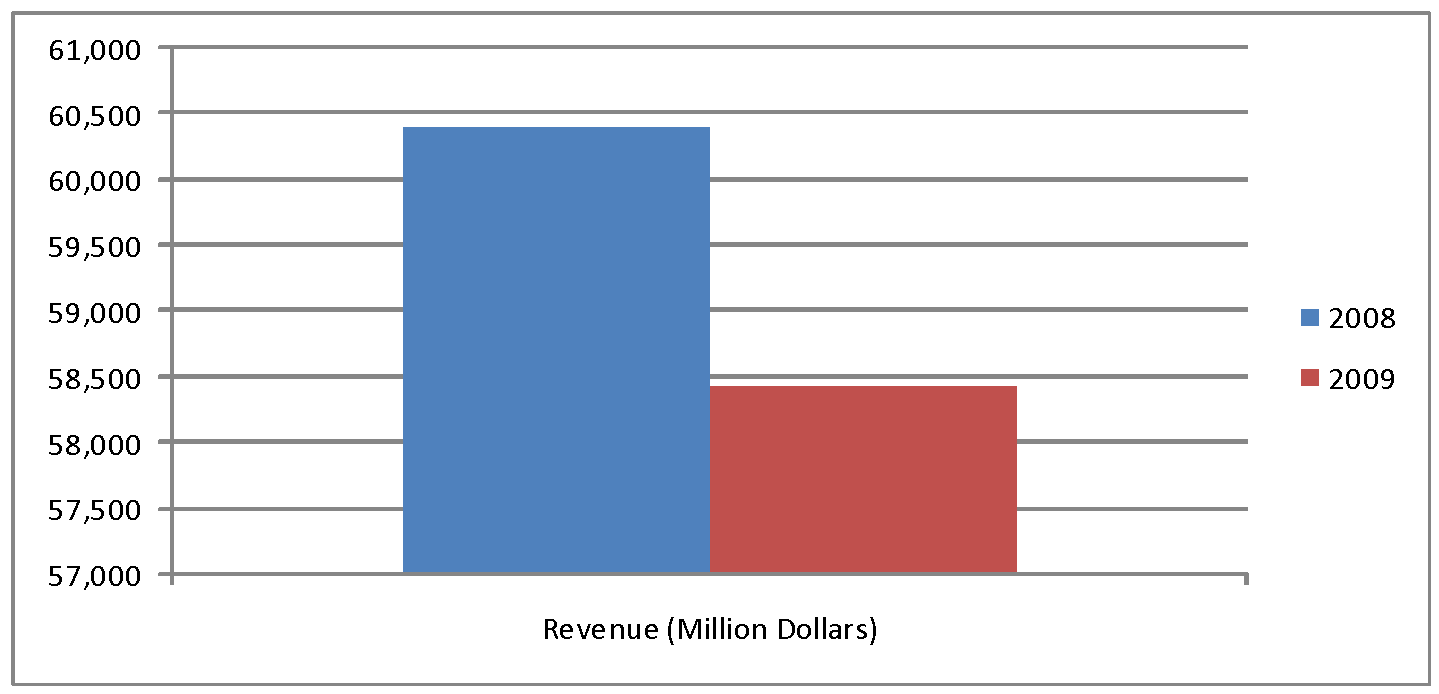
A simple performance measurement framework:
Apple: The three measures of simple performance measurement are to calculate efficiency, effectiveness, and productivity. These can be done by applying three different formulas.
- Actual output x 100%
- Effectiveness = —————————–
- Expected output
- Outputs
- Productivity = —————–
- Inputs
For apple, these ratios can be calculated using the data available for the last year. The net income is considered as the output and the total costs are termed as the input.
- Effectiveness = 128.5% (Considering quarter 4, 2009 revenue as expected)
- Productivity = 4.7
Microsoft: In the case of Microsoft these ratios are:
- Effectiveness = 82.4%
- Productivity = 1.5
From the above data, it can be said that Apple is doing better performance than Microsoft.
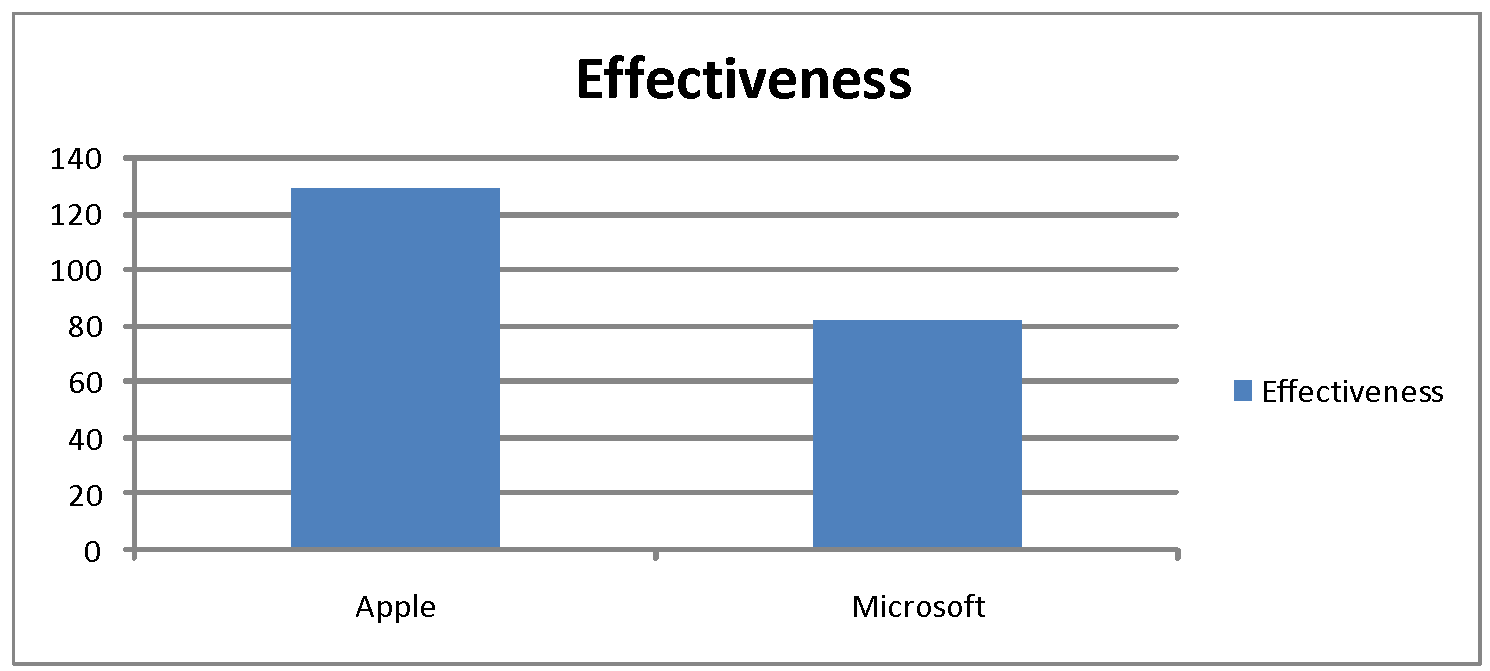
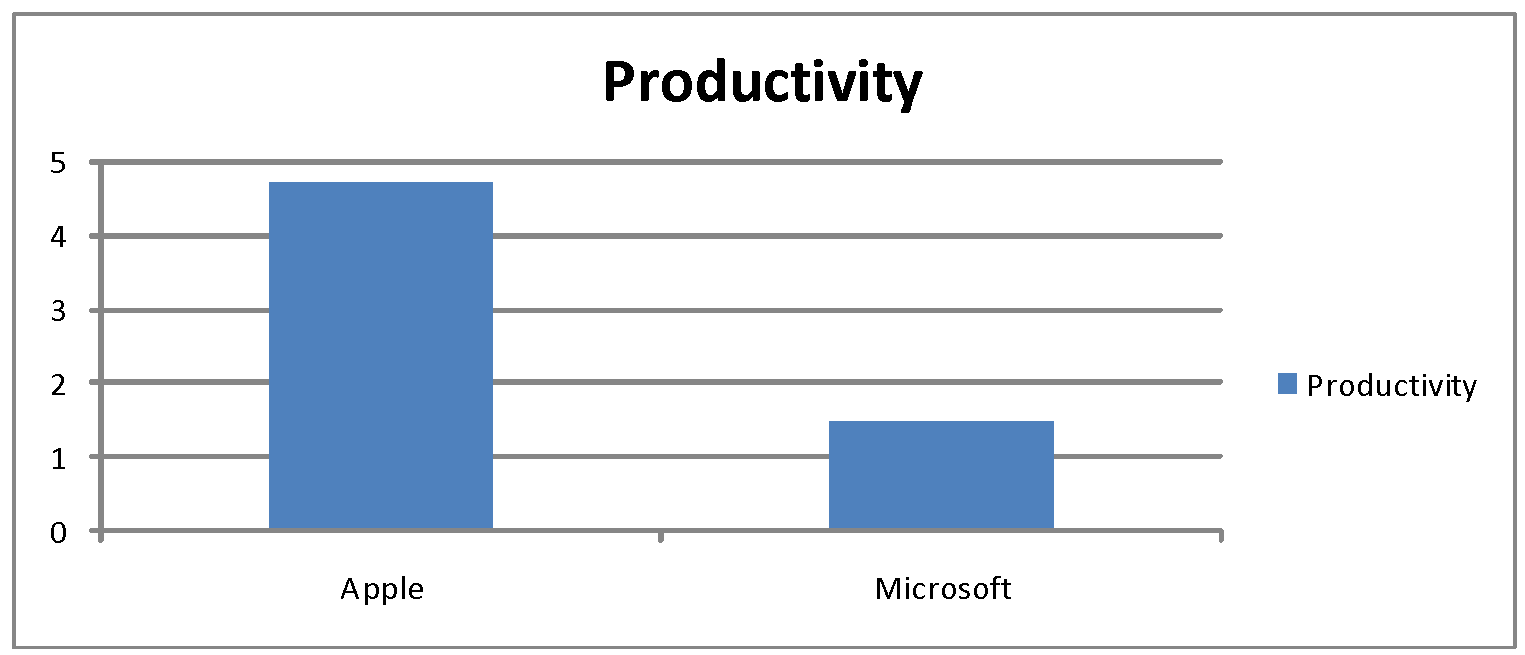
The balanced scorecard approach
Comparing the four key areas including financial perspective, customer perspective, innovation and learning perspective, and internal business perspective, Apple has lower performances in the other three areas. In the case of customer perspective, Apple has a lower level of customer awareness than Microsoft. Besides, in the case of innovation, Apple has lacked consistency while Microsoft continuously offering innovative offers like Office 2010 after introducing office 2007. Besides, Microsoft’s internal business consequences are lead by the concentration on personal computers but Apple wanted to diversify its offerings like laptops, mobile phones and many more. Thus, there is an unbalancing situation for Apple in the case of performance.
Assessment of products competitive position
The main competitive advantage of Mac products in the marketplace is the varieties of products based on the differentiation and presentation to the customers. In the global marketplace, Mac products have the competitors like laptops from Dell, HP, Acer and many more, which have strong brand awareness worldwide. However, in the marketplace for both Dell and HP products experienced significantly lower growth rates compared to the Mac products. The key two advantages Mac products have been having a niche market without needing to compete directly and the low growth rate of the competitor.
Conclusion
Apple as a pioneer in laptop-based products in the UK has experienced some key advantages and some awful aspects. However, the Mac products are doing business consistently good from the introduction. In the highly digitalized world, the market of laptops is the most competitive one as the customers here are not priced sensitive rather quality sensitive. In competition with Mac, products are generating huge profit margins for Apple and thus Apple can use innovative programs to improve the Mac products. Besides, the differentiation and suitable market niche give Mac the extra competitive advantage, which will ensure the stability of Mac as a product in the market.
Reference
Anon. (2000) Apple Financial report: United States- Securities And Exchange Commission. Web.
Anon (2010) Competition Law. [Online]. Web.
Apple Inc. (2004) Unaudited Condensed Consolidated Balance Sheets. Web.
Apple Inc. (2008) Apple Inc. Q4 2008 Unaudited Summary Data. Web.
Apple Inc. (2009) Annual report 2009 of Apple Inc: Form 10-K. Web.
Apple Inc. (2010) Apple Inc Q1, 2009 Unaudited Summary Data, Web.
Apple Inc. (2010) Apple Inc Q2, 2009 Unaudited Summary Data. Web.
Apple Inc. (2010) Apple Inc Q3, 2009 Unaudited Summary Data. Web.
Boykin, R. Fiorini, A. Tanaka, L. & Webb, M. (2008) Apple Inc. Case Study# 1: iPhone, Web.
Calacanis, J. (2010) The Case Against Apple–in Five Parts. [Online]. Web.
Entrepreneurs Media. (2010) Competitive analysis. [Online]. Web.
Financial Education. (2010) Herfindahl Index. Web.
Financial Education. (2010) The N-firm Concentration Ratio. Web.
Freedman, R.D. & Vohr, J. (1998) Apple Computer, Inc. Web.
Microsoft (2010) Yearly Profit & Loss of Microsoft Corporation. Web.
Mindinversion. (2010) Apple’s recent anticompetitive behavior? What’s your opinion of Apple’s new policy? Web.
Mintel. (2007) PC Retailing – UK. Web.
Phillips, G. (2010) Why is Apple not being sued for anticompetitive behavior? Web.
Slivka, E. (2010) Mac Market Share Surges to 5% in the UK. Web.
Yahoo Finance. (2010) Competitors. Web.
